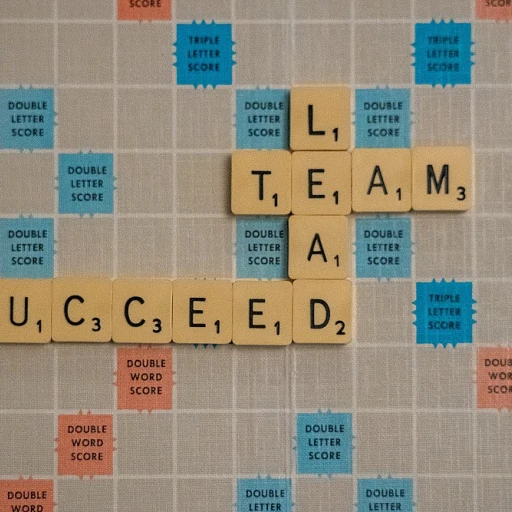
Understanding the Role of a Conductor in Leadership
The Conductor's Baton in Executive Leadership
In the vast and intricate world of organizational dynamics, the role of an orchestra conductor offers insightful parallels to the functions of an effective leader. The conductor, much like an influential executive, wields a vision that aligns the orchestra's diverse talents towards a harmonious performance. This guiding presence is pivotal, not just in driving the symphony to achieve its musical aspirations, but in fostering an environment where creativity and structure coexist. Orchestras, akin to business teams, thrive under the measured guidance of their leaders. The orchestra conductor is an emblem of adaptability and foresight, skills that are indispensable in leadership management. They orchestrate the myriad elements of music-making, coordinating time and resources to shape a masterpiece. It's an art that extends beyond waving a baton; it's about understanding and directing the intricate interplay of musicians, much like managing a complex organization. A successful leader needs to maintain a balance, just as a conductor must blend the crescendo of violins with the delicate whispers of woodwinds. Similarly, executive leadership involves calibrating the strengths and weaknesses of team members, nurturing individual brilliance while ensuring it contributes to the collective success. This skillset resonates with the essence of nurturing a symphony orchestra, where the leader's role is to channel diverse instrumental voices into a cohered narrative. In the realm of leadership management, embracing this orchestral metaphor showcases the importance of vision and execution. Directors and managers could benefit greatly from understanding leadership that embraces both precision and inspiration. Ultimately, the conductor's baton is a powerful symbol of leadership that transcends music and finds its echo in the corridors of corporate influence.The Importance of Diverse Instruments in a Corporate Orchestra
Orchestrating Diversity in the Workplace
In any symphony orchestra, the diversity of instruments plays a crucial role in creating music that resonates with an audience. Similarly, in a corporate setting, the diversity of skills, perspectives, and talents among team members is vital for achieving the organization's goals. Just as a conductor must harmonize different instruments to produce a coherent piece, leaders in business environments must balance various skill sets to foster innovation and drive performance. Balanced team dynamics can be likened to a well-conducted orchestra. The effective orchestra conductor understands the significance of each instrument, while the leader should recognize the unique contributions of each team member. In this context, diversity isn't just about checking boxes for representation; it's about actively integrating these diverse elements to create a richer organizational culture. A successful leader will strive to cultivate a team as varied as an orchestra. This involves recognizing the value brought by different backgrounds and experiences, and translating this into a unified team vision. Organizations that master this orchestration of diversity often enjoy improved problem-solving capabilities, as they benefit from a broader range of viewpoints and ideas. However, leading a team effectively requires a delicate balance; it is akin to ensuring that no instrument overpowers another, maintaining a harmonious work environment. Furthermore, the role of an orchestra concertmaster can offer insight into leadership dynamics. As the foremost musician after the conductor, the concertmaster plays a key role in leadership management and sets the tone for collaboration. Similarly, leaders within a business must ensure that team members can work together seamlessly, upholding the director's vision and propelling the organization forward. To delve deeper into the parallels between orchestras and corporate culture, understanding the role diversity plays in your organization becomes essential. Visit Understanding the Role of a Personnel Manager in Corporate Culture for a comprehensive guide on effectively integrating diverse talents into your business.Creating a Harmonious Work Environment
Cultivating a Work Environment in Harmony
The environment within an organization is akin to a symphony orchestra where every individual plays a vital role. A leader, much like a music director, is tasked with orchestrating a harmonious atmosphere that nurtures both individual talents and collective performance. In the world of symphony orchestras, an orchestra conductor must blend varied instruments and musicians to create a seamless performance. Similarly, leaders in business organizations must find ways to harmonize the diverse skills and strengths of their teams.
Creating such a harmonious work environment requires a delicate balance. It involves recognizing the unique contributions of each team member while ensuring these contributions align with the organization’s vision. In a symphony, the concertmaster plays a pivotal role in guiding sections of the orchestra, yet still follows the direction of the conductor. In a corporate setting, empowering team leads to guide their teams, whilst aligning with the overarching business vision, is crucial for harmony. For additional creative ideas to recognize outstanding employees, fostering this harmony can be invaluable.
Moreover, it's essential for leaders to not only focus on the performance of the group but also consider the well-being of individual musicians or team members. The best orchestras are those where players feel valued and motivated, something that is equally true within successful businesses. By nurturing a supportive and collaborative atmosphere, the leader ensures that team members can thrive both personally and professionally, much like musicians in a classical music ensemble achieving their highest potential.
This harmonious environment is not static; it requires constant attention and adaptation. Today's dynamic business world demands leaders who can tune their teams much like an orchestra leader adjusts to the performance venue and audience. Maintaining this balance will enable the organization to perform their symphony with excellence and achieve their desired goals.
Balancing Individual Talent with Team Performance
The Dynamics of Individual Talent and Collective Success
The delicate balance between individual talent and team performance within a business organization holds striking similarities to a symphony orchestra. Just as the concertmaster must harmonize with the primary vision set by the music director, leaders in a business context must also align individual prowess to the broader organizational goals. This alignment is critical for ensemble success, ensuring that personal aspirations don't overshadow the collective objectives. In an orchestra, each musician brings their unique flair to the composition, but it is the conductor who channels these individual talents toward a singular, cohesive performance. Similarly, leadership in any industry requires a discerning approach to managing individual congruities within a team. A successful leader appreciates the importance of recognizing unique contributions while ensuring these talents enhance, rather than disrupt, the overall organizational symphony.- Recognition of Individual Strengths: Effective leaders astutely identify and leverage the distinct capabilities of their team members. This mirrors the role of an orchestra conductor, who selects musicians for solos based on their strengths, thereby enhancing the ensemble’s performance.
- Integrating Diverse Skills: Just as a symphony orchestra relies on diverse instruments to create rich, layered music, business leaders must integrate various skills and perspectives within their team. The outcome is a robust, innovative organization, akin to the resonant chords produced by an adept string quartet.
- Continuous Alignment and Adaptation: In professional settings, as in orchestras, continuous alignment and adaptation to the ongoing changes are indispensable. The relevance of these skills cannot be overstated, as they ensure that the orchestra, whether musical or corporate, stays in tune with the times, adapting to the ever-evolving business landscape.
The Art of Communication in Leadership
The Leadership Symphony - Communicating with Clarity and Precision
Communication is at the core of leadership, akin to an orchestra conductor's baton guiding musicians to create a symphony. In the world of business, leaders serve as the music directors, ensuring that each team member plays their role effectively. Just as an orchestra requires precise timing and coordination, communication within an organization must be clear and strategic. One of the key aspects is the ability to convey the organization's vision with clarity, much like a conductor interpreting a composer's intent. Leaders must use their skills to articulate goals, aligning the orchestra of team members towards a unified performance. This involves not only verbal communication but also non-verbal cues, much like the nuances a conductor uses to lead with a wave of the hand or a slight nod. Consider the concertmaster, who acts as the bridge between the conductor and the orchestra. In an organization, leaders often rely on key team members to facilitate effective communication across different levels. This role is crucial in maintaining harmony within teams, ensuring that each musician understands their part in the larger concert of the company’s operations. Moreover, communication is a two-way process. Just as musicians in an orchestra provide feedback to their conductor through their playing, leaders must encourage open dialogue, fostering a culture where team members can express their ideas and concerns. This reciprocal communication strengthens trust and cohesion, enhancing the overall performance of the team. Effective leadership management involves adapting communication styles to fit different contexts and individuals, much like how a conductor may change tempos to match the music's dynamics. This requires emotional intelligence, empathy, and the ability to listen actively. By doing so, leaders can create a work environment where everyone feels heard, valued, and motivated to contribute their best. In conclusion, just as an orchestra draws on the collective effort of diverse musicians to create beautiful music, a successful leader orchestrates a team with a clear vision and effective communication. This ensures that the organization’s goals are not only heard but resonate throughout the corporate culture, leading to a harmonious and productive work environment.Adapting to Change: The Leadership Orchestra's Ongoing Performance
Seamless Adaptation to Change
Just as orchestras must adjust their repertoire to suit the tastes of modern audiences, businesses are compelled to adapt in a fast-paced environment. In this ever-evolving landscape, leaders must possess a keen eye for change, much like a conductor who senses the subtle shifts in a symphony.
Adaptation in leadership is not about leaving behind traditional values but rather about integrating them with innovative practices. The ability to adapt to change is central to leadership management, and successful leaders often share the characteristics of an orchestra concertmaster who gracefully guides the ensemble through new compositions.
As an orchestra conductor navigates through various pieces, they rely heavily on each musician's expertise and flexibility. Similarly, executive leadership must foster a culture that encourages team members to embrace new challenges. This requires both visionary direction and a cooperative spirit within the team. Drawing on the analogy of music making, the leader orchestrates each member's input, ensuring a cohesive and forward-thinking performance.
A leader orchestra learns, evolves, and fine-tunes its operations over time, paralleling the journey of a seasoned symphony orchestra. The process demands ongoing learning, adaptability, and an openness to innovate. This iterative process is crucial for maintaining harmony within the business organization, ensuring that it thrives amidst transformation.













